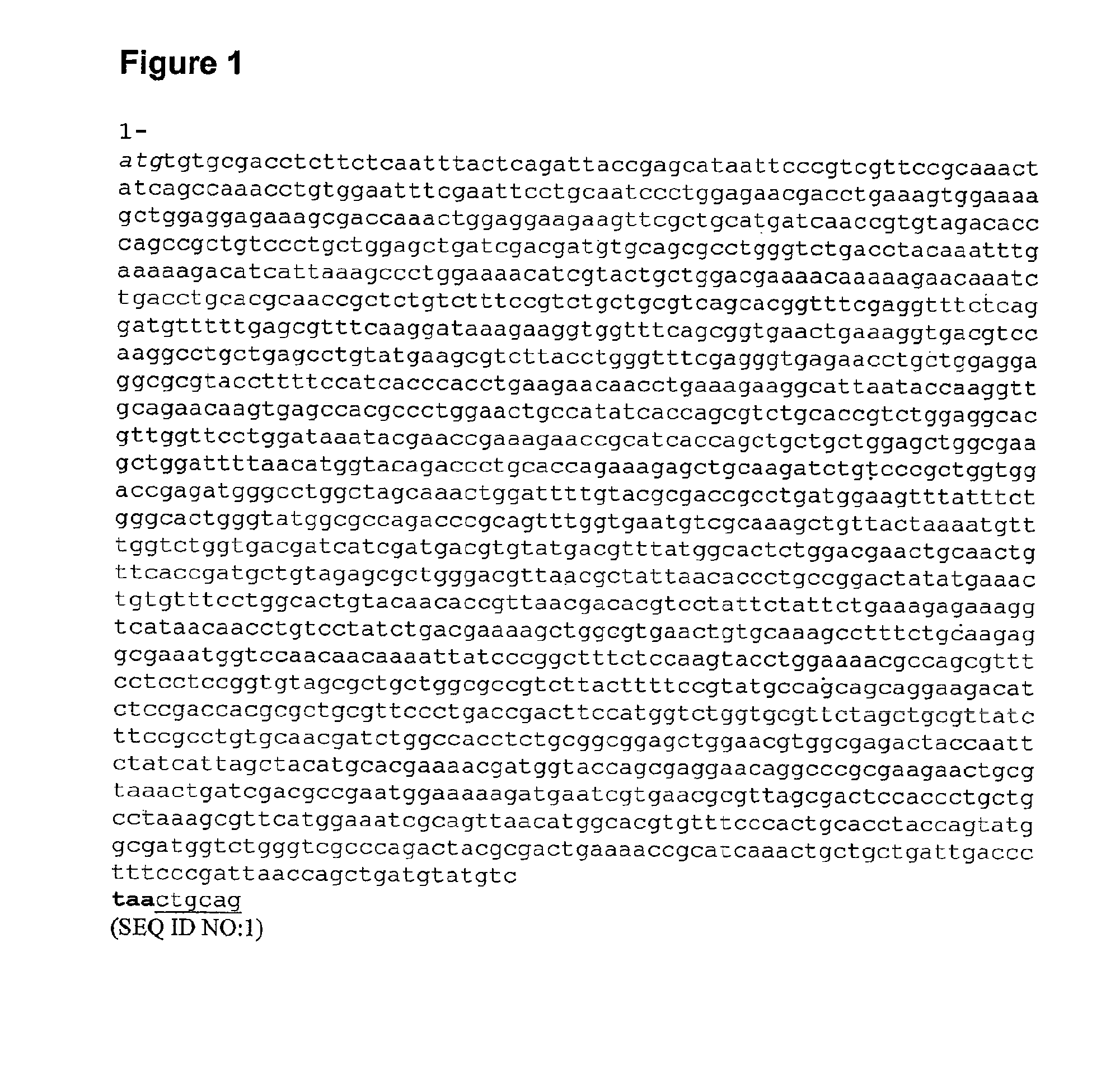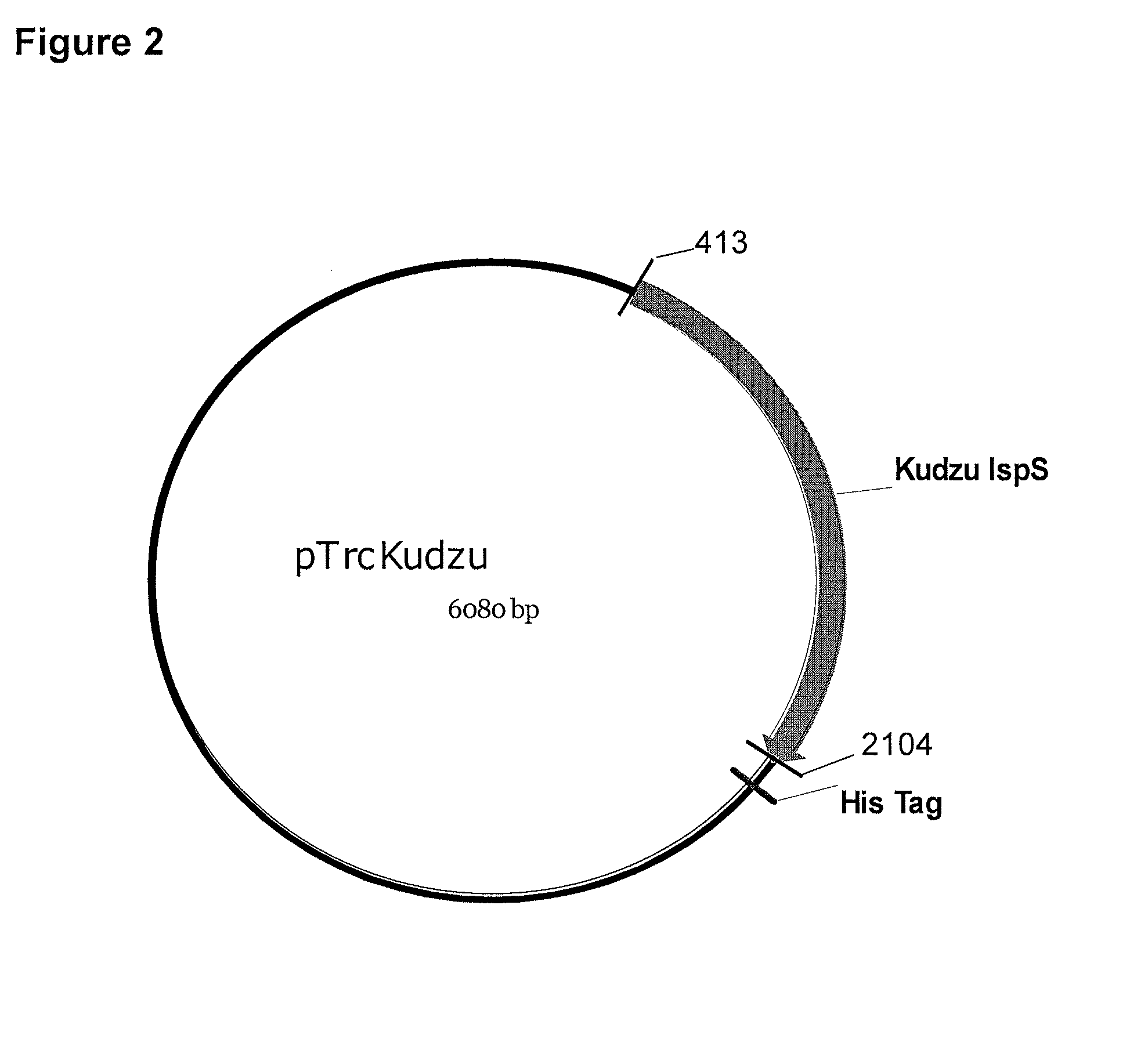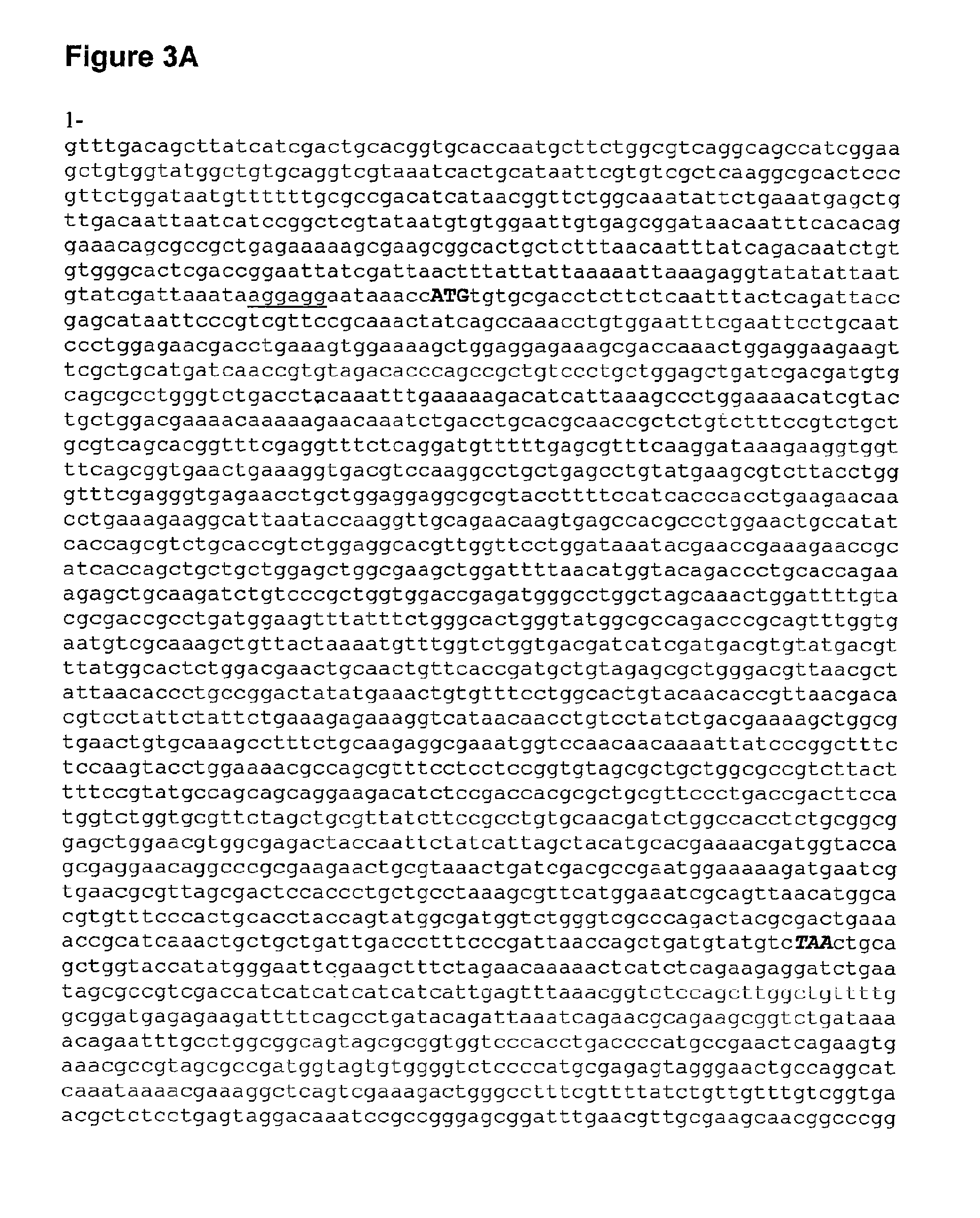Compositions and methods for producing isoprene
a technology of isoprene and isoprene slurry, which is applied in the direction of lyase, transferase, waste based fuel, etc., can solve the problems of high cost, time-consuming, and unattractive yield of isoprene from naturally occurring organisms
- Summary
- Abstract
- Description
- Claims
- Application Information
AI Technical Summary
Benefits of technology
Problems solved by technology
Method used
Image
Examples
example 1
Production of Isoprene in E. coli Expressing Recombinant Kudzu Isoprene Synthase
I. Construction of Vectors for Expression of the Kudzu Isoprene Synthase in E. coli
[0270]The protein sequence for the kudzu (Pueraria montana) isoprene synthase gene (IspS) was obtained from GenBank (AAQ84170). A kudzu isoprene synthase gene, optimized for E. coli codon usage, was purchased from DNA2.0 (SEQ ID NO:1). The isoprene synthase gene was removed from the supplied plasmid by restriction endonuclease digestion with BspLU111 / PstI, gel-purified, and ligated into pTrcHis2B (Invitrogen) that had been digested with NcoI / PstI. The construct was designed such that the stop codon in the isoprene synthase gene 5′ to the PstI site. As a result, when the construct was expressed the His-Tag is not attached to the isoprene synthase protein. The resulting plasmid, pTrcKudzu, was verified by sequencing (FIGS. 2 and 3).
[0271]The isoprene synthase gene was also cloned into pET16b (Novagen). In this case, the isop...
example 2
Production of Isoprene in E. coli Expressing Recombinant Poplar Isoprene Synthase
[0280]The protein sequence for the poplar (Populus alba x Populus tremula) isoprene synthase (Schnitzler, J-P, et al. (2005) Planta 222:777-786) was obtained from GenBank (CAC35696). A gene, codon optimized for E. coli, was purchased from DNA2.0 (p9796-poplar, FIGS. 30 and 31). The isoprene synthase gene was removed from the supplied plasmid by restriction endonuclease digestion with BspLU11I / PstI, gel-purified, and ligated into pTrcHis2B that had been digested with NcoI / PstI. The construct is cloned such that the stop codon in the insert is before the PstI site, which results in a construct in which the His-Tag is not attached to the isoprene synthase protein. The resulting plasmid pTrcPoplar (FIGS. 32 and 33), was verified by sequencing.
example 3
Production of Isoprene in Panteoa citrea Expressing Recombinant Kudzu Isoprene Synthase
[0281]The pTrcKudzu and pCL-lac Kudzu plasmids described in Example 1 were electroporated into P. citrea (U.S. Pat. No. 7,241,587). Transformants were selected on LA containing carbenicillin (200 μg / ml) or spectinomycin (50 μg / ml) respectively. Production of isoprene from shake flasks and determination of the amount of isoprene produced was performed as described in Example 1 for E. coli strains expressing recombinant kudzu isoprene synthase. Results are shown in FIG. 10.
PUM
| Property | Measurement | Unit |
|---|---|---|
| dry cell mass | aaaaa | aaaaa |
| compositions | aaaaa | aaaaa |
Abstract
Description
Claims
Application Information
 Login to View More
Login to View More - R&D
- Intellectual Property
- Life Sciences
- Materials
- Tech Scout
- Unparalleled Data Quality
- Higher Quality Content
- 60% Fewer Hallucinations
Browse by: Latest US Patents, China's latest patents, Technical Efficacy Thesaurus, Application Domain, Technology Topic, Popular Technical Reports.
© 2025 PatSnap. All rights reserved.Legal|Privacy policy|Modern Slavery Act Transparency Statement|Sitemap|About US| Contact US: help@patsnap.com



